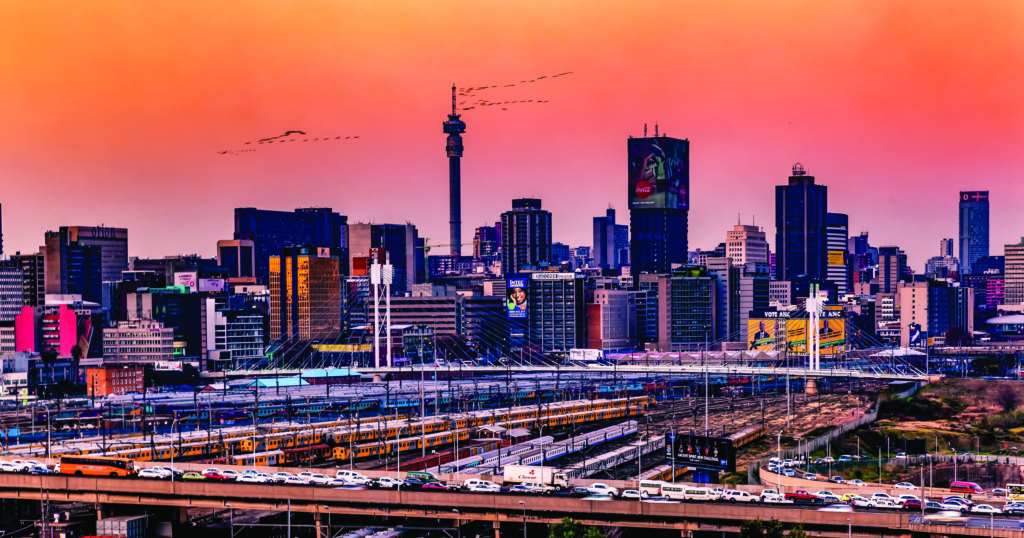
Behind the scenes of the many exciting neighbourhood regeneration projects across downtown Joburg is the handiwork of the Johannesburg Development Agency (JDA). Here’s our pick of five cool neighbourhoods.
Braamfontein
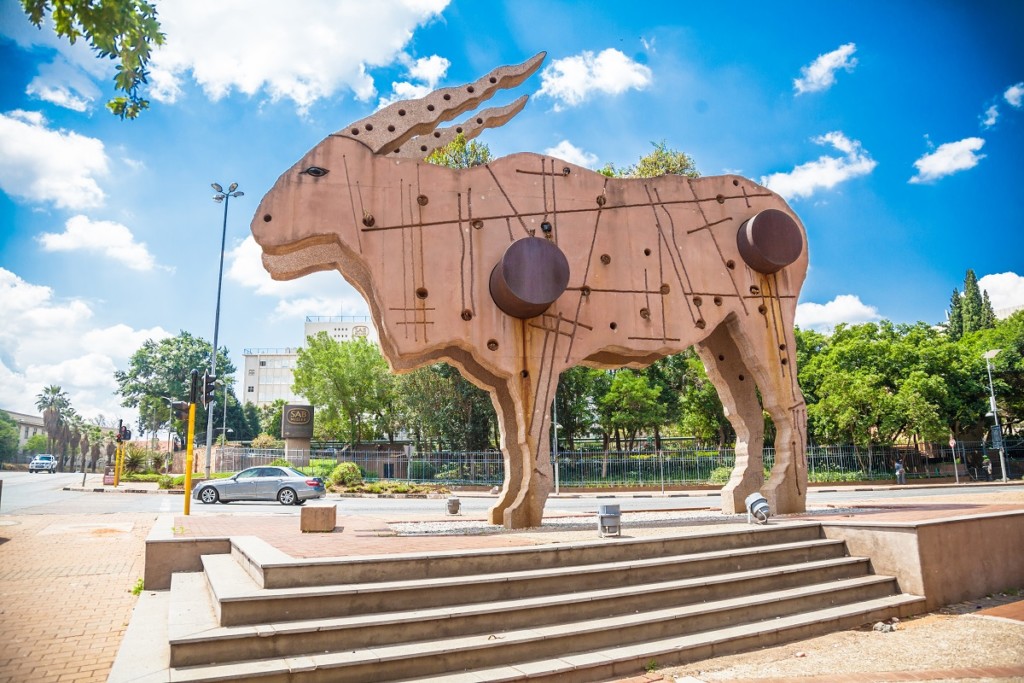
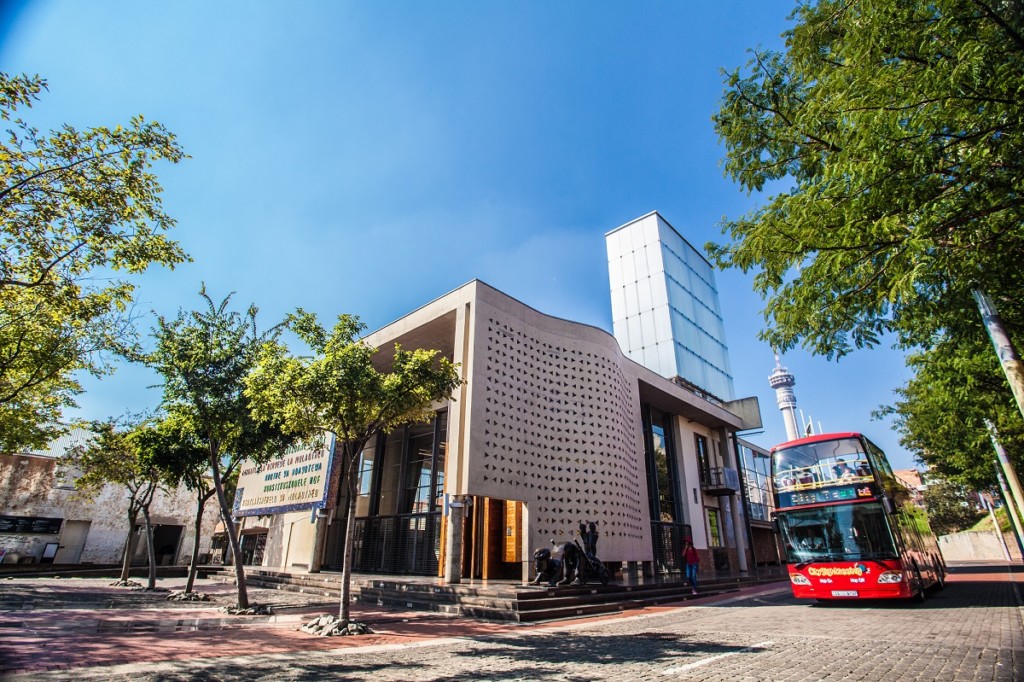
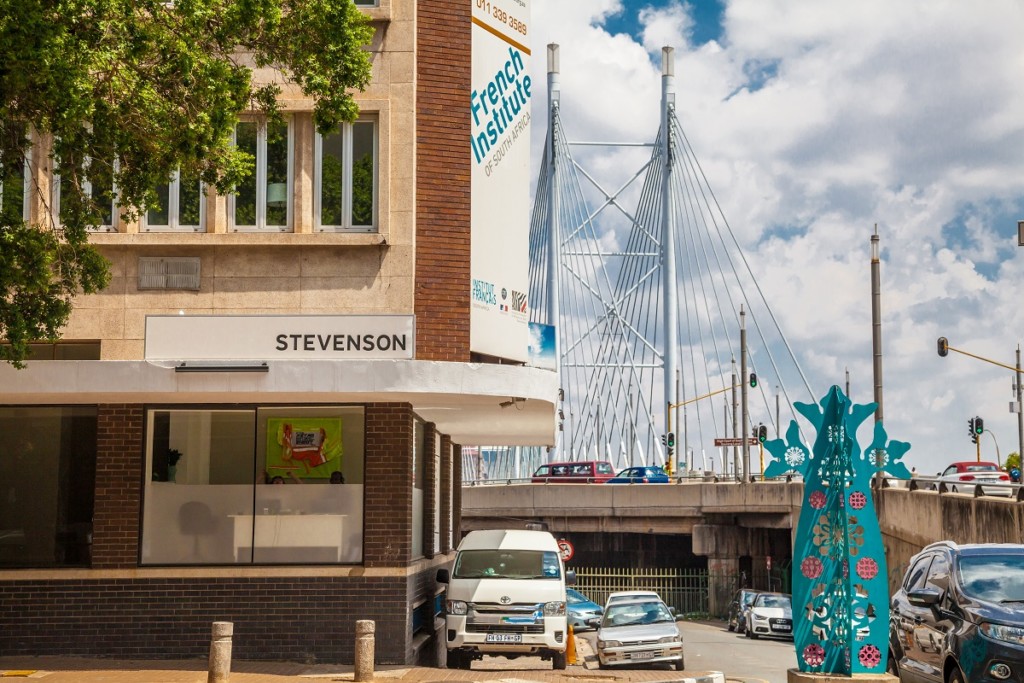
Many city visitors start their urban exploration in Braamfontein, a short walk from the Park Station Gautrain and also a stop on the open-top City Sightseeing bus.
The JDA has been investing in Braamfontein’s development since 2002 and their work includes the installation of a host of public artworks including the colourful steel trees that line Juta Street and the giant Eland sculpture that greets visitors driving up Jan Smuts Avenue, at one of the key gateways to the city. The Eland sculpture was installed by the JDA in 2007 and is the creation of local artist Clive van den Berg. The sculpture brings to mind San ancestors and the natural environment that has long since been taken over by a growing city. The artist said of his work that he hopes it prompts ‘reflection on our relationship to the past, and to the interconnectedness of environmental, cultural and spiritual destinies.’
The JDA’s public artwork project is not limited to Braamfontein – contemporary sculptures that speak to Joburg’s past, present and future can be found all over the inner-city including in Newtown and Ellis Park (see below for details).
With the Wits University campus based here, Braamfontein is a youthful neighbourhood that also has a rich arts and culture scene. The corner of Juta and De Beer Streets is the hub of much of the action with cafés, coffee shops and lively bars. Every Saturday crowds flock to the rooftop Neighbourgoods Market. Meanwhile a few blocks over is The Grove, a colourful piazza looked over by the new Once in Joburg backpackers hostel and hotel.
The JDA was also instrumental in the transformation of the Constitution Hill precinct, one of Joburg’s most important heritage landmarks, that is now a museum and home to the South African Constitutional Court. The JDA also led the construction of the Nelson Mandela Bridge (completed in 2003) which crosses over the railway tracks between Braamfontein and Newtown. The iconic bridge lights up in rainbow colours at night.
Braamfontein has a rich cultural scene. To get a feel for the neighbourhood make sure to hang out on Juta Street (you’ll get to admire the local street fashion) visit one of the excellent museums like Origins Centre, Wits Art Museum or Constitution Hill, grab lunch on a Saturday at the trendy Neighbourgoods Market and catch a show at Joburg Theatre.
HOW TO GET THERE: The City Sightseeing bus has three Braamfontein stops and the Rea Vaya C-4 also stops here. Braamfontein is a 5-minute walk from Park Station Gautrain.
USEFUL CONTACTS: Once in Joburg, 90 De Korte St, tel. +27 87 625 0639 | Origins Centre, Wits University campus (entrance at cnr Yale Rd and Enoch Sontonga Ave), tel. +27 11 717 4700. Open daily | Neighbourgoods Market 73 Juta Street, 09:00-15:00 | Wits Art Museum, Cnr Jan Smuts Ave and Jorissen St, tel. +27 11 717 1365. Closed Mon, Tue | Constitution Hill, entrances on Joubert St and Kotze St, tel. +27 11 381 3100. Open Daily | Joburg Theatre, 163 Civic Boulevard, tel. 0861 670 670 | City Sightseeing bus Tel. 0861 733 286 |
Newtown
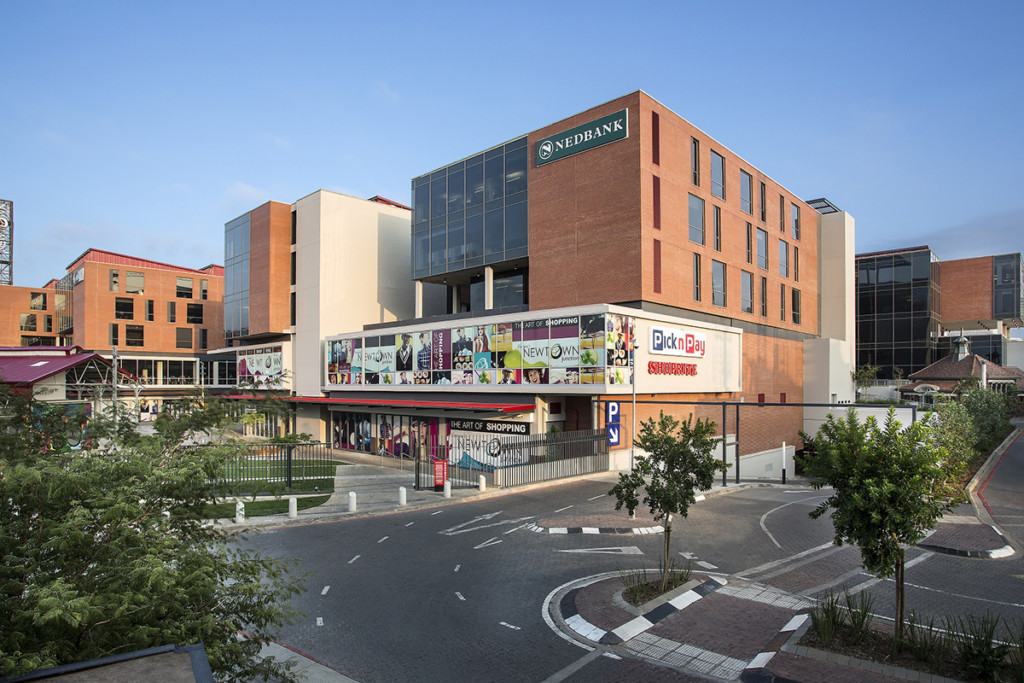
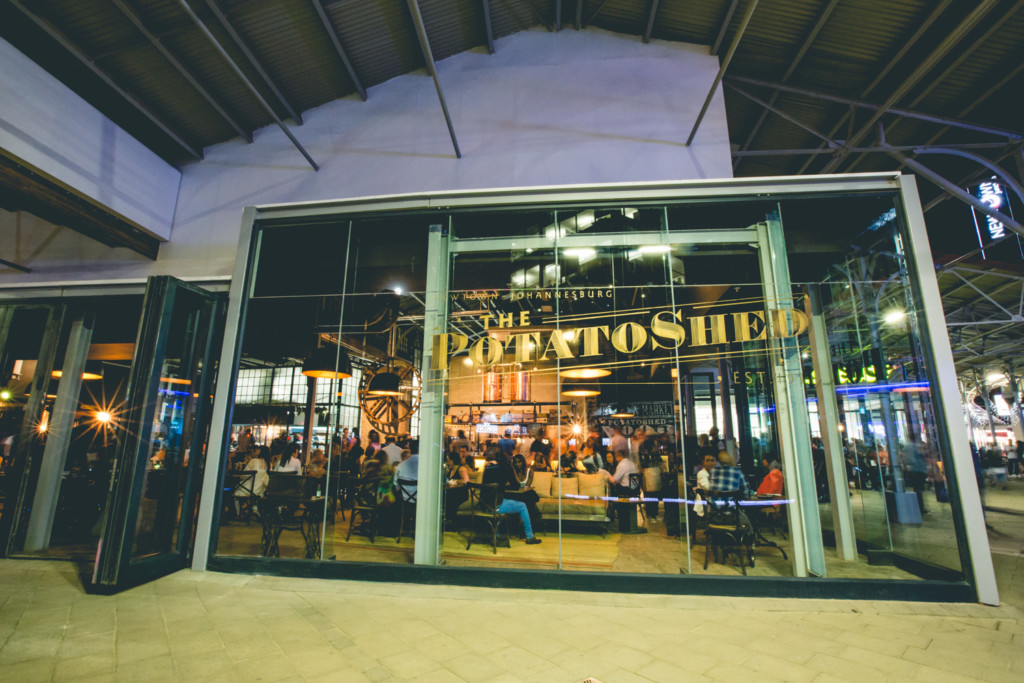
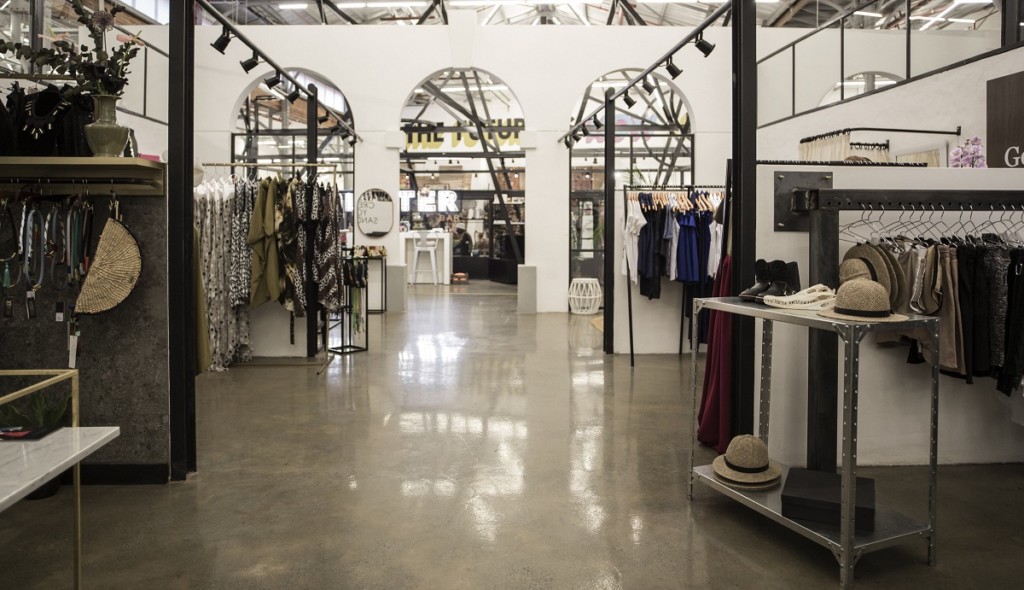
Drive along Queen Elizabeth bridge from Braamfontein to see The Firewalker, a collaboration between world renowned South African artist William Kentridge and Gerhard Marx, another JDA commission. The 11-metre high fractured metal sculpture resembles a woman walking with a coal brazier on her head (a familiar city sight). Take a right after the statue and drive down Gwigwi Mrwebi Street to reach Newtown, one of the largest urban developments led by the JDA. At its centre is Newtown Junction shopping precinct and a new City Lodge Hotel.
Newtown was once the site of the city’s fruit and vegetable markets. In 2015 the old potato sheds (built in 1911) were cleverly restored and now house fashion emporium Work Shop New Town and the steam-punk styled Potato Shed restaurant. Another unusual heritage landmark, an old Edwardian men’s toilet, was also recently repurposed and is now The Gentleman’s Arthouse, an exclusive avant-garde bar filled with antique curios.
Eagle-eyed visitors will notice that many of the streets in Newtown have been named for South African jazz legends such as singer Miriam Makeba and saxophonist Gwigwi Mrwebi. Another jazz legend Jeremiah “Kippie” Moeketsi is immortalised in a bronze statue (installed with the JDA’s assistance) outside what was once Kippies jazz club. Across the walkway is The Market Theatre. A leading South African theatre, it has occupied the site of the old Indian fruit market since 1976 and is a cornerstone of the Newtown Cultural Precinct.
HOW TO GET THERE: The City Sightseeing bus and C-3 Rea Vaya bus stop at Newtown Junction.
USEFUL CONTACTS: Newtown Junction shopping centre tel. +27 11 492 0105, open daily | Work Shop New Town, open daily | City Lodge Hotel Newtown, cnr Carr and Miriam Makeba Streets, tel. +27 10 065 0700 | The Potato Shed, tel. +27 10 590 6133, open daily | The Market Theatre +27 11 832 1641 |
Ferreirasdorp
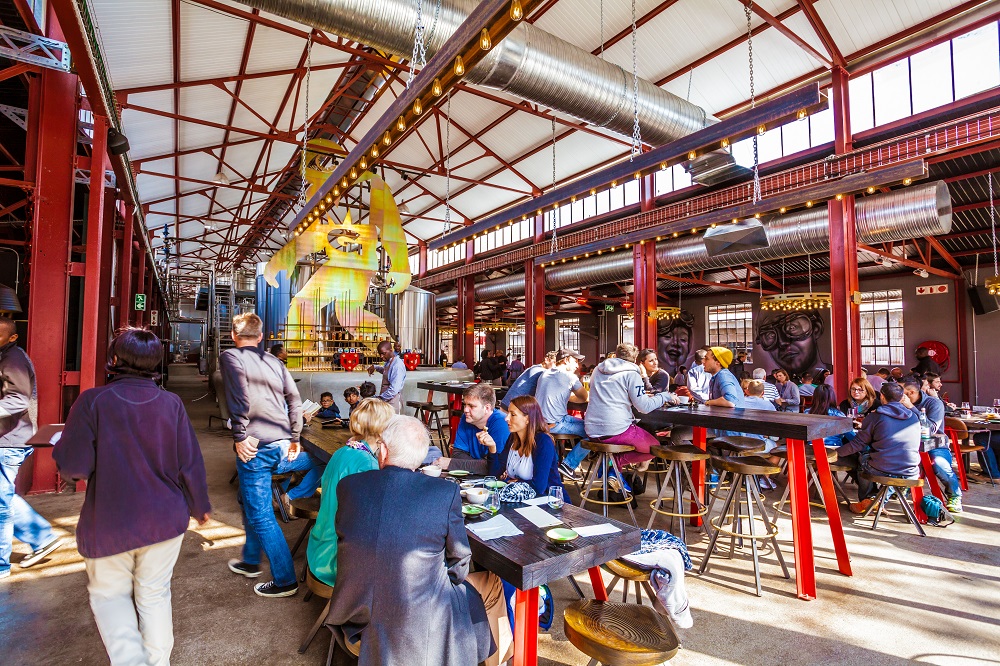
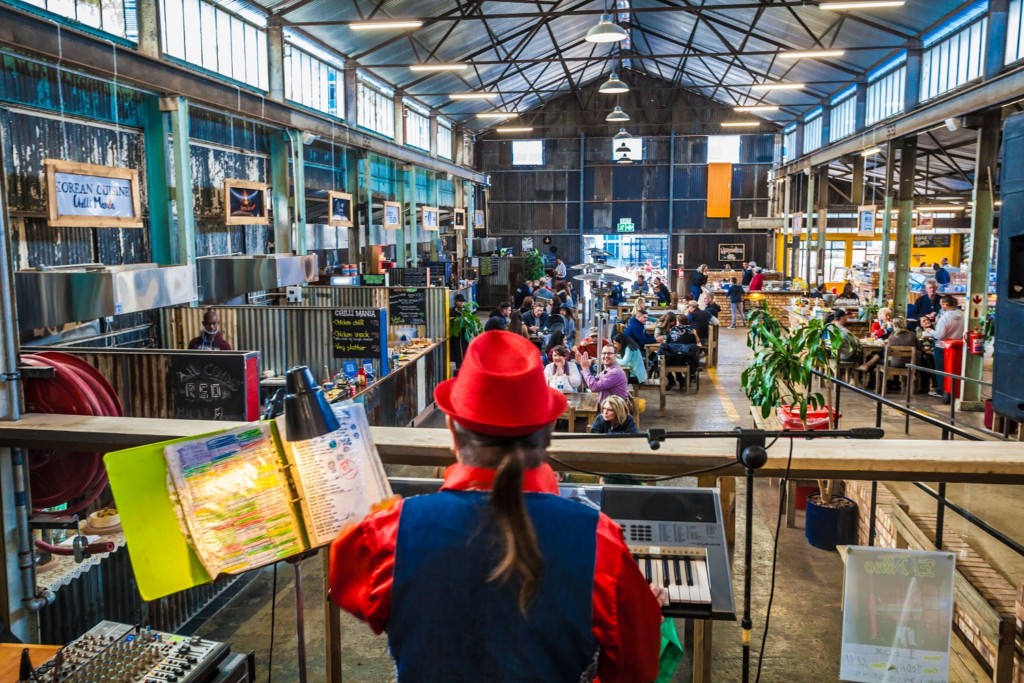
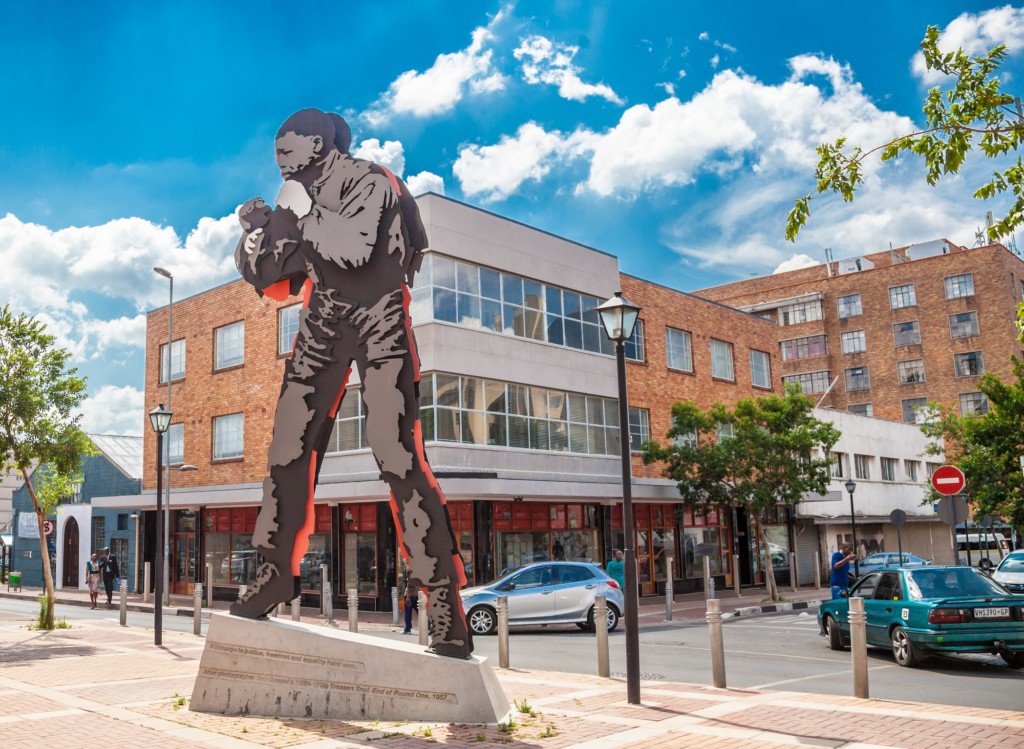
Some five blocks south of Newtown the district of Ferreirasdorp, once the site of Joburg’s earliest gold mining claims, has seen much regeneration and investment from the JDA in recent years. The area’s newest landmark is 1 Fox Precinct, which dates back to the 1890s and is named for its main entrance at 1 Fox Street. Launched in 2015, this neatly contained former warehouse complex is home to the Good Luck Bar live music venue, Mad Giant craft brewery (pictured above) and beer garden and the 1 Fox Market Shed.
Chancellor House, the building from where Oliver Tambo and Nelson Mandela ran their legal practice in the 1950s is another major attraction in the area. It now houses an open-air exhibition on their groundbreaking legal work. Standing tall with the Magistrate’s Court at his back is Marco Cianfanelli’s impressive statue of a young Mandela shadowboxing, installed by the JDA in 2013.
HOW TO GET THERE: The C-3 Rea Vaya bus stops at Chancellor House.
USEFUL CONTACTS: The Good Luck Bar, tel. +27 84 683 4413 | Mad Giant craft brewery, tel. +27 11 492 0901, open daily | 1 Fox Market Shed, tel. +27 84 057 0015, open Fri 12:00–17:00, Sat 10:00–19:00, Sun and public holidays 10:00–16:00 | Chancellor House cnr Fox and Gerard Sekoto Streets |
Maboneng
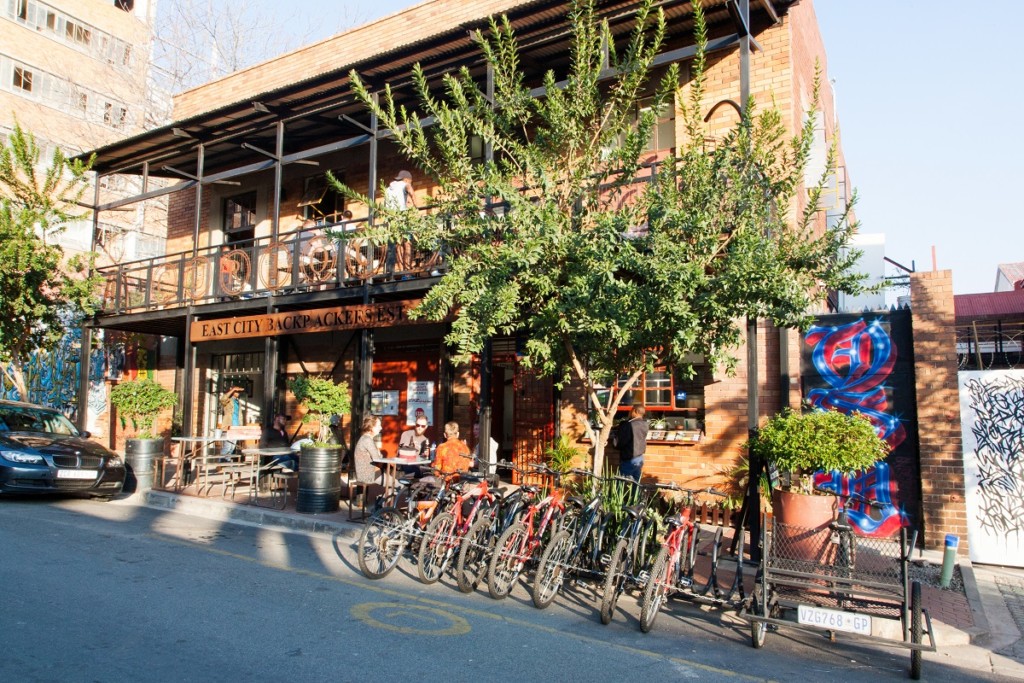
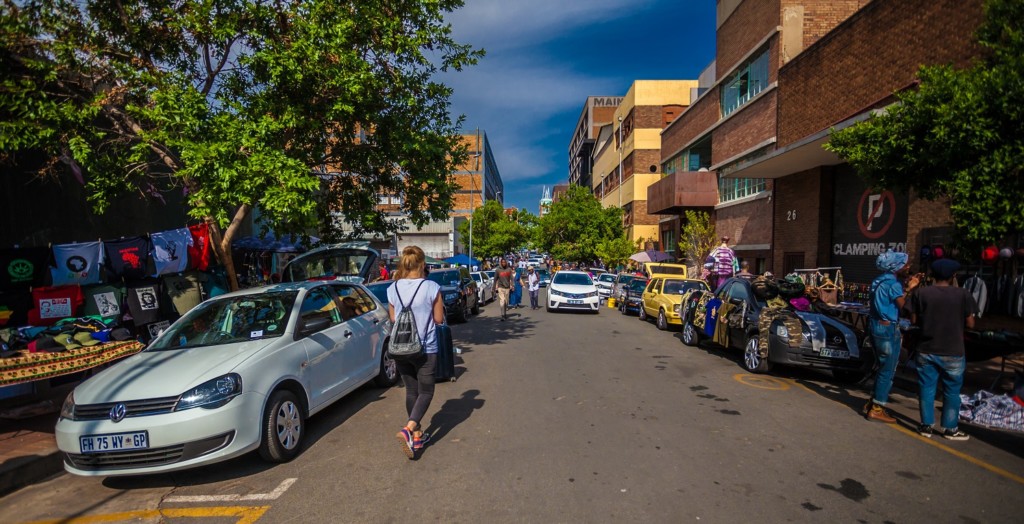
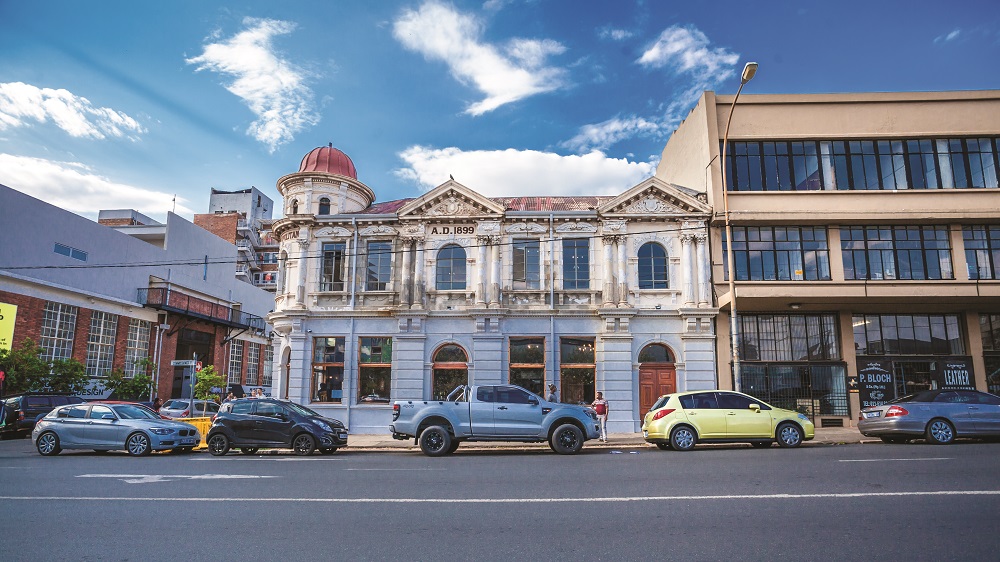
This district came to life in 2008 when local entrepreneur Jonathan Liebmann bought up dozens of rundown industrial warehouses and factories on the city’s eastern edge, in an area known as ‘City and Suburban’. He then set about transforming them with the help of the JDA (co-initiators on the redevelopment of the area) and today what is now called the Maboneng Precinct comprises 55 buildings and is one of the city’s trendiest areas.
Arts On Main (cnr Fox St and Berea Rd) was the pioneering development. Its tenants include David Krut Projects print studio and artist William Kentridge’s private studio as well as the weekly Market On Main. One block up from here is the Main Street Life building, home to The Bioscope independent cinema, the POPArt Theatre and a number of small restaurants and bars. At the top of the street at 302 Fox Street is the Curiocity African Design Hostel (pictured above), one of the most innovative backpackers hostels in the city.
Since its opening the precinct has expanded massively with cafés, bars, galleries, boutiques and dozens of smart residential buildings. These include the cleverly restored Victorian heritage building The Cosmopolitan (pictured above) which is now home to art exhibition spaces, a bar and restaurant, coffee shop and sculpture garden. With the JDA’s support Maboneng’s next phase is taking place north of Albertina Sisulu Road. The newest building to launch in this new part of Maboneng is Hallmark House, designed by London-based African architect David Adjaye which includes a boutique hotel and designer apartments.
HOW TO GET THERE: Take the C-1 Rea Vaya bus from Chancellor House, Library Gardens or Carlton Centre to the Jeppe SAPS stop.
USEFUL CONTACTS: David Krut Projects 264 Fox St, tel. +27 11 334 1209, open daily | Market On Main tel. +27 82 868 1335, open Sun 10:00-15:00 | The Bioscope 286 Fox St, tel. +27 11 039 7306 | POPArt Theatre 286 Fox St, tel. +27 83 245 1040 | Curiocity African Design Hostel, 302 Fox St, tel. +27 11 614 0163 | | The Cosmopolitan 24 Albrecht St (cnr Commissioner St) | Hallmark House 54 Siemert Rd, tel. +27 11 402 0220 |
Ellis Park Precinct
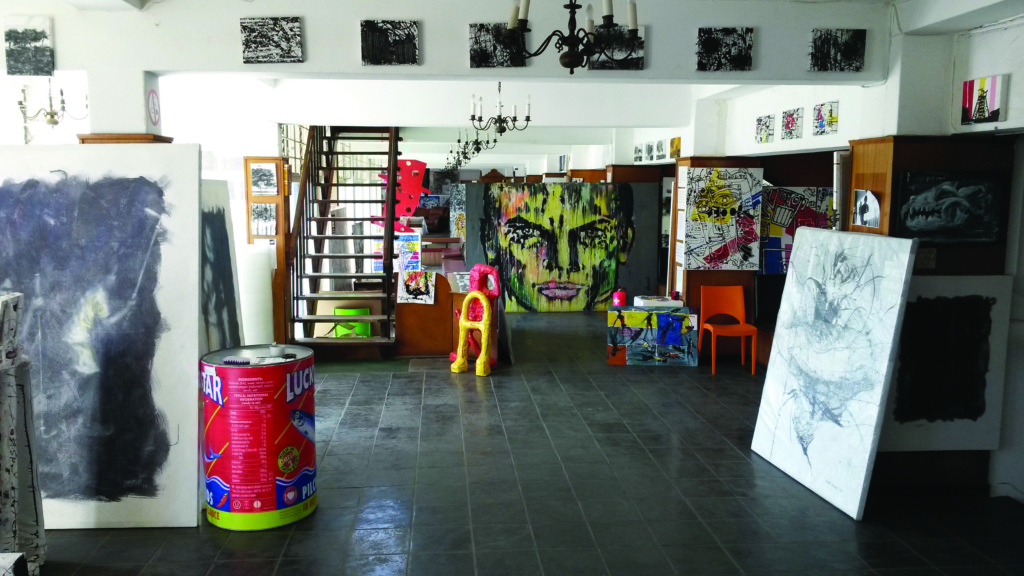
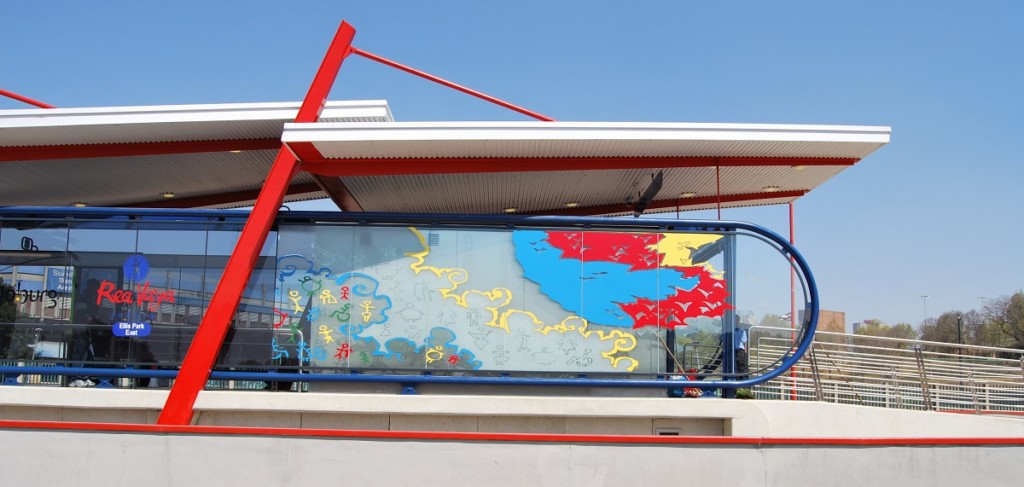
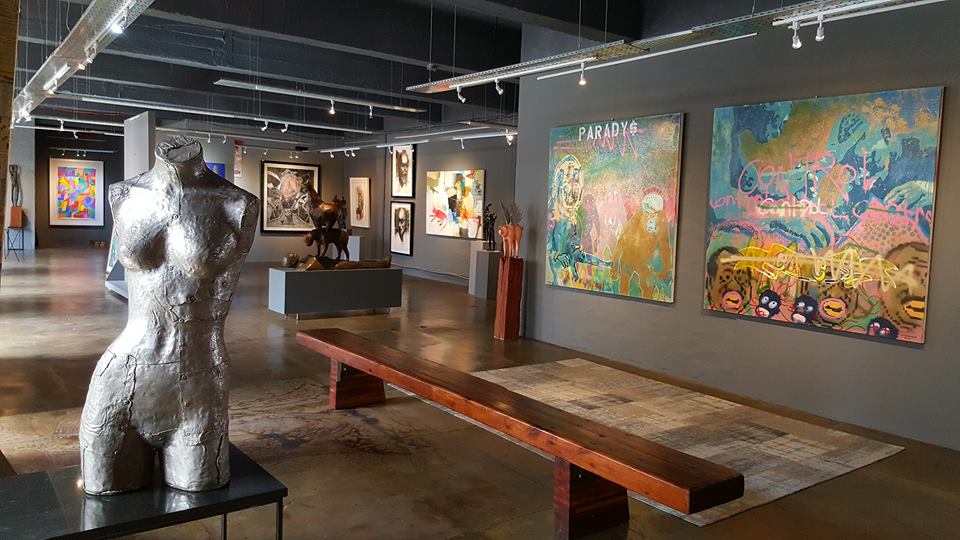
Neighbouring Maboneng is Ellis Park Precinct in Doornfontein, named for the Ellis Park rugby stadium (now known as Emirates Airline Park). Next door is Ellis Park swimming pool and athletics stadium. The rugby stadium was a match venue for the 2010 FIFA World Cup and leading up to the event the JDA carried out extensive upgrades here which included a Rea Vaya bus route and the installation of numerous football-inspired artworks. The global event acted as a catalyst for further investment in the area. The most recent new developments include the transformation of the old tennis club into Living Artist Emporium artist studios and of the Ellis House building (23 Voorhout St) into an arts hub which is now home to leading contemporary art gallery ROOM and Art Eye Gallery, as well as the beautiful Piece@Ellis House store, stocking one of the finest selections of handcrafted accessories, sculpture and ceramics made in Southern Africa. A few blocks away in Lorentzville is Nando’s Central Kitchen (10 Victoria Rd), headquarters of one of South Africa’s most celebrated global brands.
HOW TO GET THERE: Take the C-1 or T-1 Rea Vaya bus from Chancellor House, Library Gardens or Carlton Centre.
USEFUL CONTACTS: Ellis Park Rugby Museum, tel. +27 61 400 4883, open Mon-Fri visits by appointment | Living Artist Emporium, Ellis Park Tennis Stadium, cnr Miller St and Bertrams Rd, tel. +27 82 573 3488, open Mon-Fri, weekend visits by appointment | ROOM, tel. +27 11 074 4944, closed Sun, Mon | Art Eye Gallery, tel. +27 71 386 2198, closed Sun | Piece@Ellis House, tel. +27 83 400 5126, closed Sun |
What is the JDA?
The JDA manages and facilitates developments that contribute to building an equitable, sustainable and resilient city. The agency was set up to facilitate area-based developments that bring to life the City of Johannesburg’s development vision. Its key programmes are focused on creating sustainable environments and transport networks, transit nodes that provide access to affordable accommodation and transport, high quality public spaces and amenities, and good community services. The agency’s work is aimed at shifting the design of the city to to improve liveability. A key part is the regeneration of the inner city. Since 2001 the JDA has worked on enhancing the city’s cultural and tourism potential, working with private companies and interests to meet the needs of all those who live in the city.